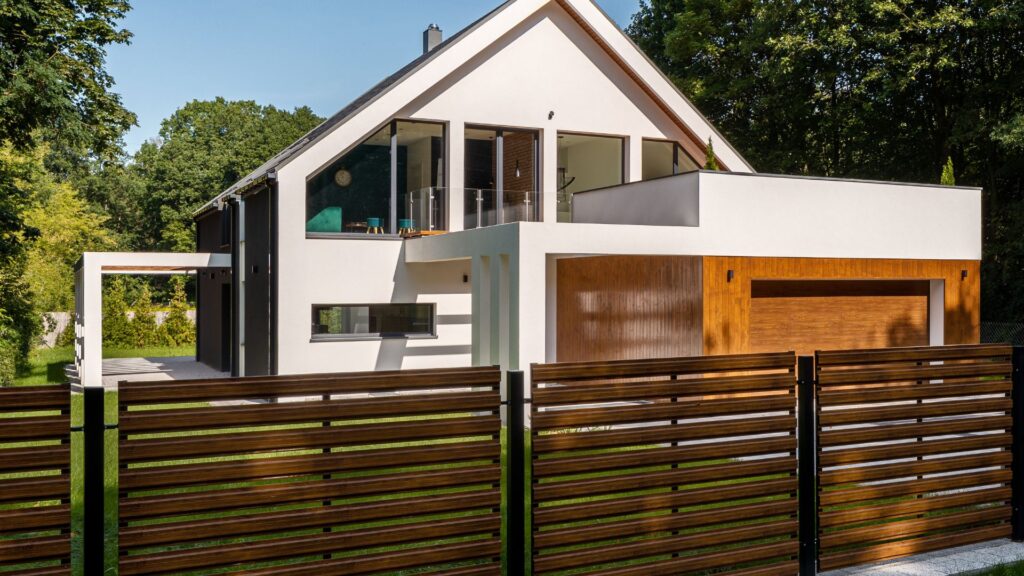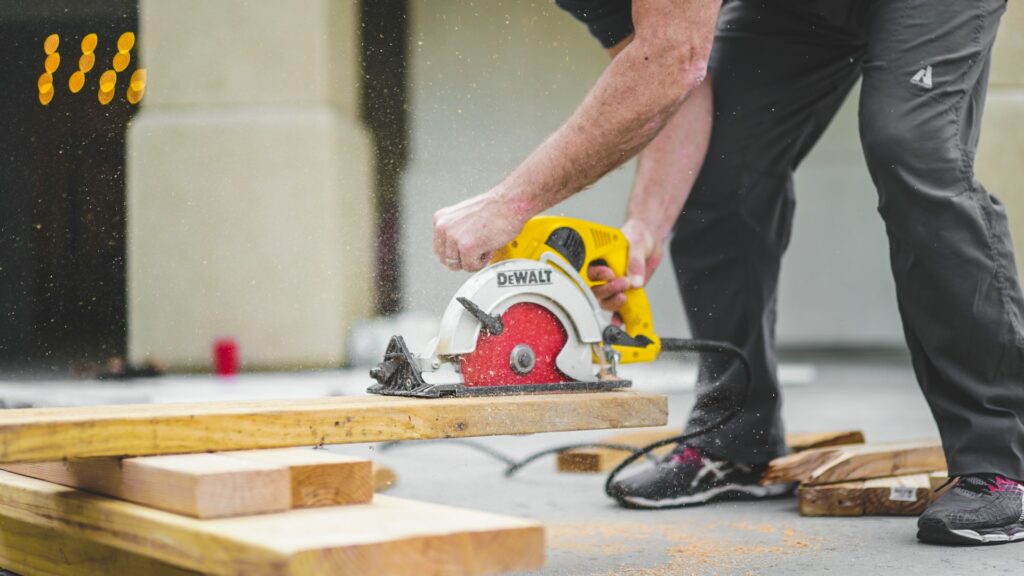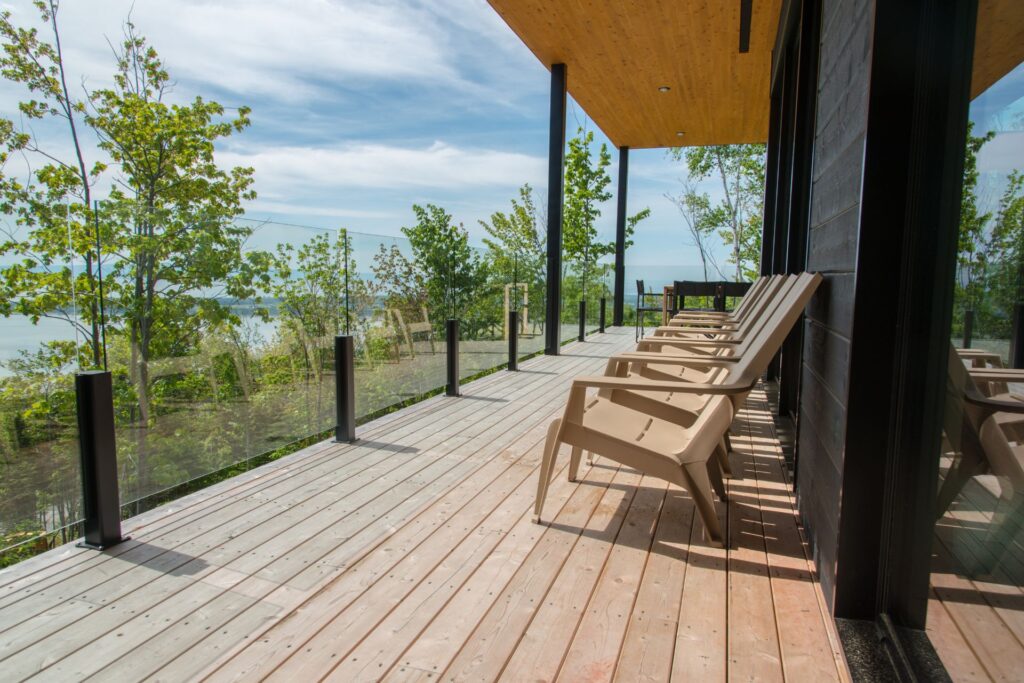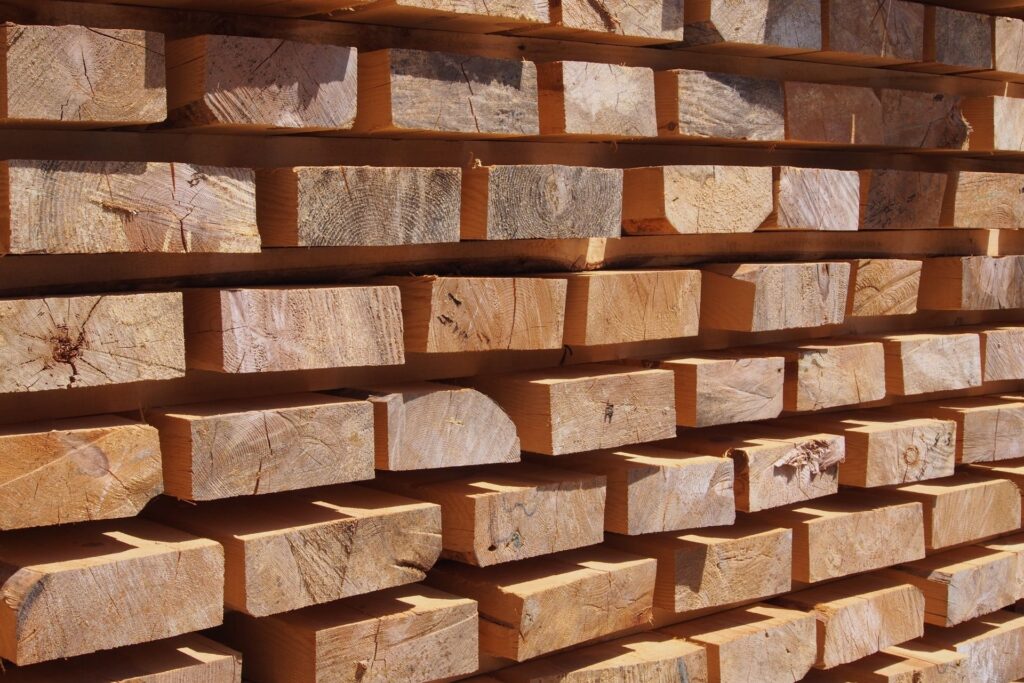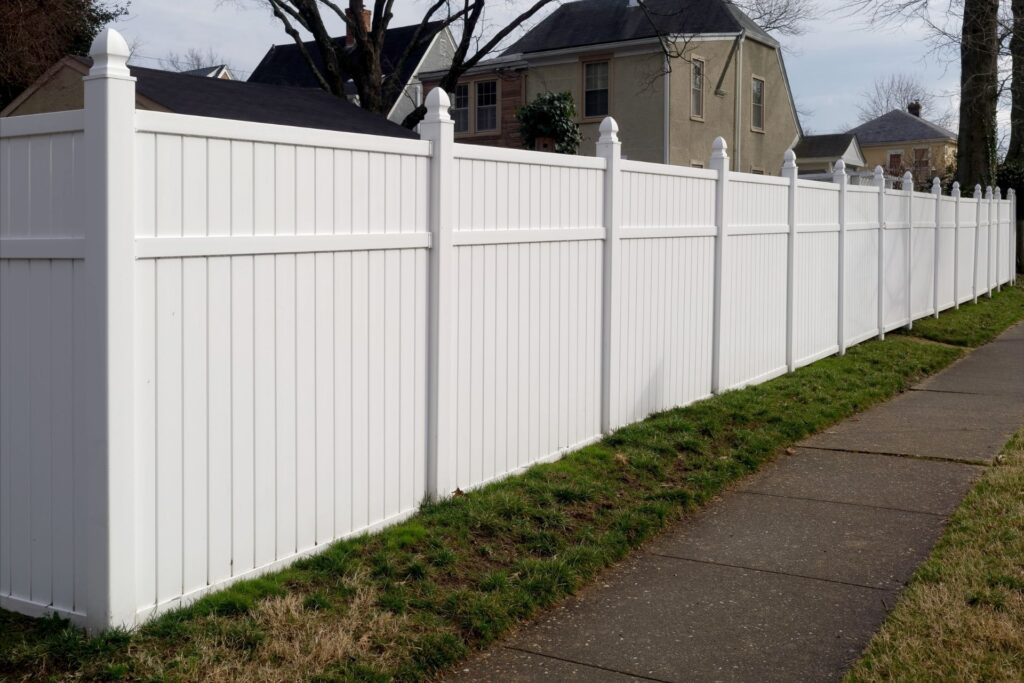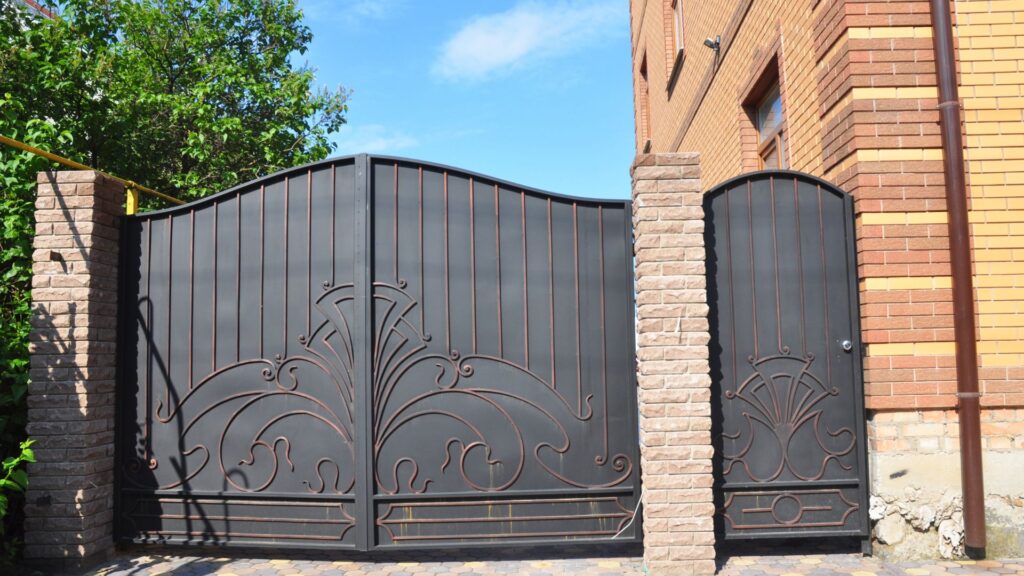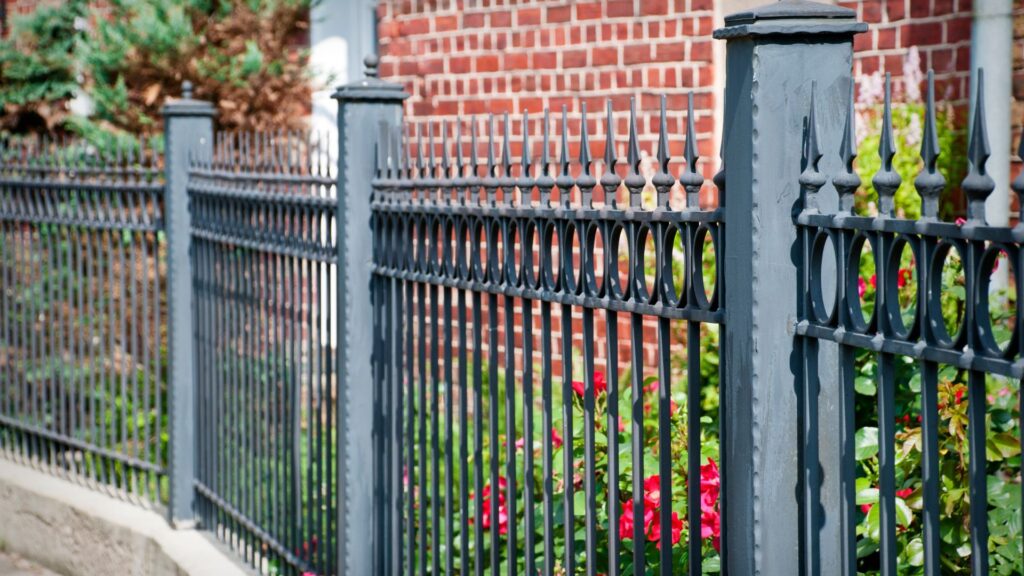Welcome to our comprehensive guide on understanding how much it costs to install a fence gate! Whether you’re looking to enhance your home’s security, add curb appeal, or simply define property boundaries, installing a fence gate is an excellent way to achieve these goals. However, the price can vary greatly depending on factors like the type of materials you choose, the size and style of the gate, labor costs, and additional features such as automation. In this post, we’ll break down everything you need to know about the costs involved, so you can make an informed decision and get the best value for your investment. Let’s dive into the key factors that influence the cost of installing a fence gate.
On average, it costs between $350 and $1,800 to install a fence gate, depending on factors such as the type of material, gate size, design complexity, and labor fees. Basic gates made from chain-link or wood tend to be on the lower end, while vinyl, metal, or automated gates can push the cost higher.
Table of Contents
Factors That Influence The Cost Of Installing A Fence Gate
Installing a fence gate is a significant investment, and several factors can affect the overall cost. Understanding these variables can help you make informed decisions when planning your project. Below are key elements that influence the cost of a fence gate installation:
Material Type
The choice of material is one of the most critical factors impacting the cost of a fence gate. Each material offers distinct benefits, and prices can vary significantly based on durability, aesthetic appeal, and maintenance needs. Here’s a comparison of some popular options:
- Wood: A classic choice, wood gates offer natural beauty and customization options but require regular maintenance to prevent rotting or warping. Wood is typically affordable, though high-quality hardwoods like cedar can raise costs.
- Vinyl: Vinyl gates are durable, low-maintenance, and resistant to weather and pests. They generally come at a higher price than wood but are cost-effective in the long run due to their longevity.
- Metal (Wrought Iron, Aluminum, or Steel): Metal gates are sturdy and long-lasting, making them ideal for security purposes. Wrought iron gates are decorative but can be more expensive due to the labor involved in fabrication. Aluminum is lightweight and resistant to rust, offering a middle-ground option, while steel provides maximum strength but at a higher cost.
- Chain Link: The most affordable option, chain link gates are practical and durable but lack aesthetic appeal. They’re often used for functional purposes rather than decorative ones.
Size of the Gate
The size of the gate directly impacts the amount of material needed and the labor required, which in turn affects the total cost. Standard gate sizes typically range between 4 to 6 feet wide for pedestrian gates, and 10 to 20 feet wide for driveway gates. However, if you opt for a custom-sized gate, especially for larger driveways or properties requiring non-standard dimensions, expect to pay more due to additional materials and increased labor time.
Gate Design and Features
The design of your gate also plays a significant role in determining the price. Basic gates with a simple, functional design will cost less than decorative or complex ones. Here are some common options:
- Swing Gates: These are the most traditional type of gate and tend to be more affordable. However, they require sufficient space to open and close, which can add to installation complexity.
- Sliding Gates: Ideal for properties with limited space, sliding gates are often more expensive due to the additional mechanisms needed for smooth operation.
- Dual Gates: These consist of two swinging or sliding panels, often used for larger openings. Dual gates increase material and installation costs but can add a more refined look to your property.
- Automated Gates: Automation adds convenience and security but significantly increases the cost. Motorized gates, remote controls, and sensors all contribute to higher upfront and ongoing maintenance expenses.
Labor Costs
Labor costs can vary widely depending on your location, the complexity of the installation, and the expertise of the contractor. Urban areas or regions with a higher cost of living tend to have higher labor rates, while more complex installations, such as those involving automation or custom designs, require more time and expertise, increasing labor costs. On average, labor fees for fence gate installations range from $35 to $75 per hour, or contractors may charge a flat installation fee based on the size and type of gate.
Permits and Local Regulations
In many areas, local building codes and regulations require permits for installing fences and gates. The cost of obtaining a permit can vary depending on your location, typically ranging from $50 to $400. Failing to acquire the necessary permits can result in fines or having to alter the installation to meet code requirements, so it’s essential to check with your local authorities before beginning your project.
By considering these factors, you can better estimate the total cost of your fence gate installation and choose options that fit your budget while meeting your functional and aesthetic needs.

Material Costs Breakdown
When considering installing a gate for your property, the material you choose will significantly impact both the appearance and the cost. Each material type comes with its own advantages and disadvantages, and understanding these can help you make an informed decision based on your needs, budget, and preferences. Below is a detailed breakdown of the most common gate materials, along with their pros, cons, and average costs.
Wood Gates
Wood gates are a classic choice for many homeowners because of their natural beauty and versatility.
Pros:
Wood gates offer an aesthetically pleasing look that blends well with various architectural styles. They can be easily customized to match the specific design and size of your space, giving you more creative control over the final look. Whether you’re aiming for a rustic or modern appeal, wood gates can be tailored to your taste.
Cons:
One of the main drawbacks of wood gates is the need for regular maintenance. Exposure to weather conditions can lead to warping, rotting, or fading over time, requiring periodic treatment or painting. Without proper care, the gate may deteriorate faster than other materials.
Average Cost
The cost of wood gates varies depending on the type of wood you choose. Common options include pine, cedar, and redwood, each offering different levels of durability and appearance. On average, you can expect to pay between $200 and $700 for a wood gate. High-end woods like redwood will fall on the pricier end of the spectrum.
Vinyl Gates
Vinyl gates are an excellent choice for those who prioritize low maintenance and long-term durability.
Pros:
One of the biggest advantages of vinyl gates is their low maintenance requirements. Unlike wood, vinyl doesn’t need to be painted or stained, and it’s resistant to weather damage, rotting, and pests. Vinyl gates are also durable, standing up well against wear and tear over time.
Cons:
While vinyl gates are durable and require little upkeep, they tend to come with a higher upfront cost compared to wood. Additionally, the color options are often more limited, which might restrict customization opportunities for homeowners looking for a specific aesthetic.
Average Cost
The average cost for vinyl gates ranges from $300 to $900, depending on the size and style of the gate. Although the initial investment is higher, the low maintenance costs make vinyl an attractive long-term option.
Metal Gates (Aluminum, Steel, Wrought Iron)
Metal gates, including aluminum, steel, and wrought iron, are known for their strength and long lifespan, making them a popular choice for security and durability.
Pros:
Metal gates are incredibly strong and can last for decades with proper care. They provide a sturdy barrier and often come in elegant designs, especially in the case of wrought iron. These gates can enhance the security of your property while adding an element of sophistication.
Cons:
One downside of metal gates is their susceptibility to rust, especially in humid or coastal environments. Maintenance may be required to prevent corrosion, particularly with iron gates. Additionally, the installation of metal gates typically requires professional help, which can add to the overall cost.
Average Cost
Depending on the material (aluminum, steel, or wrought iron), the cost of metal gates ranges from $300 to $1,200. Aluminum tends to be more affordable and resistant to rust, while wrought iron gates are often more expensive but provide a classic, elegant look.
Chain-Link Gates
Chain-link gates are known for their affordability and practicality, often used in both residential and commercial settings.
Pros:
Chain-link gates are one of the most affordable options available. They are functional, easy to install, and require very little maintenance. For homeowners on a budget or those seeking a simple, practical solution, chain-link gates are a great choice.
Cons:
The main drawback of chain-link gates is their industrial appearance, which may not appeal to all homeowners. They also provide little privacy unless additional materials (such as slats) are added, which can increase the overall cost.
Average Cost
Chain-link gates typically cost between $100 and $400, making them the most budget-friendly option. While basic in design, they can be an effective solution for securing a property at a lower price point.
Other Options (Composite, Bamboo, etc.)
In addition to the common materials mentioned above, there are several less traditional gate materials worth considering, such as composite and bamboo.
- Composite gates are made from a mix of materials like wood fibers and plastic. They combine the look of wood with the durability of synthetic materials, requiring less maintenance than traditional wood gates. The cost typically ranges from $300 to $1,000.
- Bamboo gates offer a more eco-friendly and unique option. While bamboo is lightweight and sustainable, it may not be as durable as other materials and may require special treatment. Bamboo gates generally fall in the range of $150 to $600, depending on the size and quality of the material.
When choosing a gate material, it’s essential to consider not only the initial cost but also long-term maintenance, durability, and aesthetic preferences. Each material has its own set of pros and cons, so evaluate your priorities—whether it’s the beauty of wood, the durability of metal, or the low-maintenance appeal of vinyl—to find the best fit for your property.
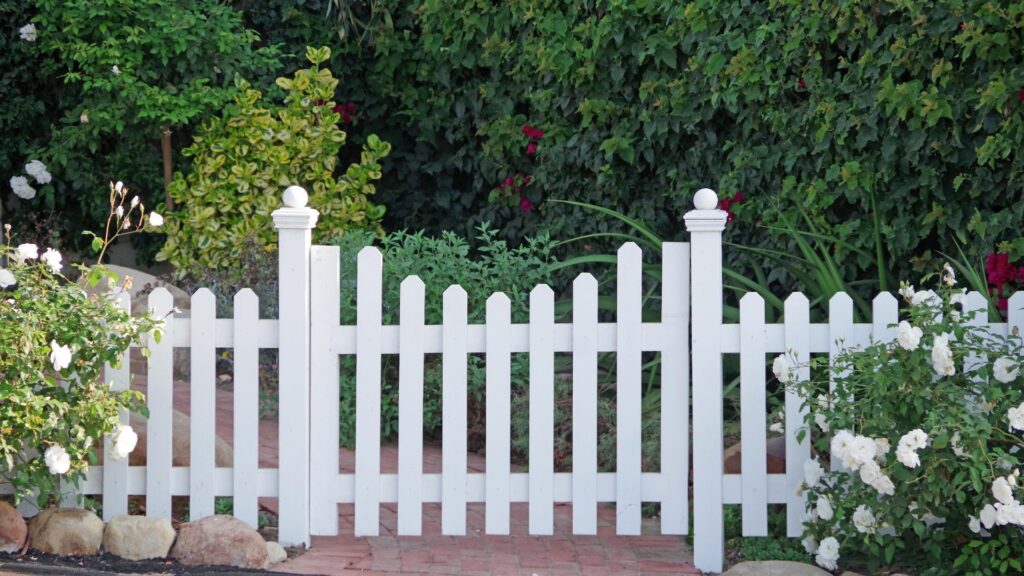
Installation Cost Breakdown
When planning a home improvement project, understanding the cost breakdown of installation is key to budgeting. Whether you’re considering taking the DIY route or hiring a professional, the costs and benefits vary widely. Below is a detailed look at these aspects to help you make an informed decision.
DIY vs. Hiring a Professional
Pros and Cons of DIY
Opting for a DIY installation can be a great way to save money and take pride in your work. By handling the installation yourself, you avoid labor fees and have more control over the project timeline. Additionally, DIY projects often come with lower upfront costs, especially if you already own the necessary tools. On average, DIY costs for installation can range from $100 to $300, depending on the complexity of the project and the materials you choose.
However, there are some downsides to consider. DIY installations can be time-consuming, especially for individuals without much experience. The risk of making errors, which could lead to costly repairs down the line, is also higher. If the project requires a high level of expertise or specialized tools, the time and effort involved might outweigh the potential savings.
Pros and Cons of Hiring a Professional
Hiring a professional contractor, on the other hand, ensures a high-quality, polished result. With professionals, you’re paying for their expertise, the proper tools, and a guarantee that the job is done right the first time. Many contractors also offer warranties, which can give you peace of mind knowing that any issues will be addressed.
The downside to hiring a professional is, of course, the cost. Labor fees vary depending on the scope of the project, but the typical range for basic installations is around $100 to $400 or more. This can fluctuate based on factors like the complexity of the project and the contractor’s experience. While the higher cost may seem like a drawback, the reliability and reduced stress often make it worth the investment for many homeowners.
Regional Variations in Labor Costs
One critical factor to consider when budgeting for a professional installation is regional variation in labor costs. Labor fees can differ significantly based on your location. For example, in areas with a higher cost of living—such as major metropolitan cities—the cost of hiring a professional may be significantly higher than in rural or less densely populated regions. Areas with a high demand for contractors can also drive up labor costs.
In general, labor costs tend to be more expensive on the East and West Coasts of the United States, while rates in the Midwest and Southern regions are often lower. However, even within these regions, costs can fluctuate based on local demand, the availability of skilled labor, and the complexity of the project. It’s always a good idea to obtain multiple quotes from contractors in your area to get a clearer understanding of what your installation might cost.
Ultimately, whether you choose to go the DIY route or hire a professional, both approaches come with their own set of costs and benefits. DIY installations can save you money, but may require more time and effort, while hiring a professional ensures expert results at a higher cost. Labor costs also vary depending on your location, so it’s important to consider regional factors when planning your project budget. Taking these considerations into account will help you make a decision that fits your needs, budget, and timeline.

Additional Costs To Consider
When planning to install a gate, the upfront price is not the only factor to consider. There are various additional costs that can affect the total investment. Below, we break down some of the most common additional expenses you might encounter, along with their potential impact on your budget.
Gate Hardware (Hinges, Latches, Locks)
The quality and type of gate hardware—such as hinges, latches, and locks—are critical to the gate’s overall functionality and security. Basic hardware is typically more affordable, offering simple mechanisms at a lower cost. However, if you’re looking for premium hardware that includes advanced locking systems, anti-rust materials, or higher durability, you can expect to pay significantly more.
- Basic hardware costs can range from $50 to $200, depending on the material and brand.
- Premium hardware with added security features, such as keypads, biometric locks, or reinforced materials, can push the cost up to $500 or more.
While these costs may seem small compared to the total gate installation, choosing the right hardware is crucial for long-term reliability and security.
Automation Features
Adding automation features to your gate provides convenience and increased security, but it comes with a higher price tag. Automatic gate openers, sensors, and remotes allow you to control the gate without manually opening and closing it, which is especially beneficial for larger or more frequently used gates.
- On average, automation features can range from $500 to $3,000, depending on the complexity and the technology involved.
- Basic systems with a remote control or a keypad are on the lower end of this range.
- More advanced systems, including solar-powered options, smartphone integration, or additional safety sensors, can fall into the higher end of the price spectrum.
It’s essential to factor in these costs when considering automation, as they can significantly raise the overall cost of your gate installation.
Painting, Staining, or Sealing (For Wood Gates)
Wood gates have a timeless aesthetic appeal, but they require ongoing maintenance to protect them from the elements. Whether it’s painting, staining, or sealing, the cost to preserve a wood gate should not be overlooked. Regular upkeep is necessary to prevent rotting, warping, or fading due to weather exposure.
- Painting or staining can cost between $200 and $1,000, depending on the size of the gate and the quality of the materials used.
- Sealing is also a crucial step to protect the wood from moisture and insect damage, with costs ranging from $100 to $500 for professional application.
This maintenance is not a one-time expense—wood gates may need to be repainted or re-stained every few years to stay in optimal condition, making it an important factor in the gate’s long-term cost.
Maintenance Costs
Regardless of the material your gate is made of, ongoing maintenance is essential for ensuring its longevity and proper function. Different materials have different maintenance needs:
- Wood gates require regular treatment, such as re-painting or sealing, as previously mentioned. Annual upkeep could run between $200 to $500, depending on the condition of the gate.
- Metal gates (such as iron or steel) need attention to prevent rust. Periodic rust removal and repainting can cost anywhere from $100 to $300 annually.
- Vinyl gates are low-maintenance but may still need occasional cleaning or minor repairs, with costs ranging between $50 to $150 annually.
Regular maintenance ensures your gate not only looks great but also performs effectively for years to come, helping you avoid more expensive repairs or replacements down the road.
While the initial cost of a gate is important, these additional expenses—hardware, automation, painting, and maintenance—can significantly impact your overall budget. It’s crucial to account for these ongoing costs to ensure that your gate remains functional, secure, and aesthetically pleasing for years to come. Whether you prioritize high-end hardware or opt for basic materials, understanding the full financial commitment is key to making a well-informed decision.

Cost Comparison By Gate Type
When considering a gate for your property, the cost is often a major deciding factor. However, it’s not just the material price that matters—labor costs can significantly affect the total expense. In this section, we’ll provide a detailed comparison of the typical costs for different gate types, including the materials and installation. This will give you a clearer understanding of what to expect based on the gate material you choose.
1. Wood Gate: Traditional and Versatile
Wood gates are a popular choice for homeowners seeking a classic or rustic look. However, the price of a wood gate can vary greatly based on the type of wood used and the intricacies of the installation process.
- Cost Range: On average, the total cost of a wood gate, including both materials and labor, can range from $350 to $1,100.
- Factors Influencing Cost: Higher-end wood types such as cedar or redwood will drive up the price, while more affordable woods like pine can keep costs lower. Additionally, customized designs, larger gates, or more intricate installations can add to the labor expense.
2. Vinyl Gate: Low Maintenance and Modern
Vinyl gates are an attractive option for those looking for durability with minimal maintenance. These gates are known for their clean, modern look and resistance to weathering, making them a popular choice for residential properties.
- Cost Range: The typical total cost for a vinyl gate, including both materials and labor, usually falls between $500 and $1,400.
- Factors Influencing Cost: The cost varies depending on the gate size and design. While vinyl is generally a more expensive material, the long-term savings from its low maintenance needs can make it a cost-effective option over time. Intricate designs or customized gate heights may add to the total cost.
3. Metal Gate (Aluminum, Steel, Wrought Iron): Durable and Elegant
Metal gates, whether made of aluminum, steel, or wrought iron, are highly regarded for their durability and elegant appearance. They are perfect for homeowners who prioritize security without compromising on aesthetic appeal.
- Cost Range: Installing a metal gate typically costs between $600 and $1,800, depending on the material and labor involved.
- Factors Influencing Cost: Wrought iron gates tend to be on the higher end of the price spectrum due to their weight, complexity, and custom design options. Aluminum and steel are usually more affordable alternatives but still offer long-lasting durability. Larger gates or complex installations will also increase labor costs.
4. Chain-Link Gate: Economical and Practical
If you’re looking for a budget-friendly option, chain-link gates offer a practical solution without sacrificing functionality. While they may not provide the same level of privacy or aesthetic appeal as other materials, they are commonly used for securing properties at a lower cost.
- Cost Range: Chain-link gates are one of the most affordable options, with total costs typically ranging from $200 to $700.
- Factors Influencing Cost: The size of the gate and the quality of the chain-link material can affect the overall price. Installation costs for chain-link gates are generally lower due to the relatively simple process, making this option appealing for those looking for an economical solution.
Choosing the Right Gate for Your Budget
When choosing a gate, it’s essential to weigh the cost against your specific needs. A wood gate may offer traditional appeal, but the ongoing maintenance might be a consideration. Vinyl gates, while more expensive upfront, require less upkeep. Metal gates are durable and stylish but come with a higher price tag. Meanwhile, chain-link gates are affordable but may not suit every aesthetic preference. By understanding these cost comparisons, you can make an informed decision that balances your budget with your desired gate features.

How To Save Money On Fence Gate Installation
Fence gate installation can often be an expensive undertaking, but with a bit of careful planning and smart choices, you can significantly reduce the overall cost. Here are some practical ways to save money while ensuring you get a quality fence gate installed.
1. Plan Ahead
One of the most effective ways to save money on any home improvement project, including fence gate installation, is early planning. When you plan ahead, you avoid making hasty decisions that could lead to costly mistakes. For example, rushing into the project without considering all aspects like material availability, permits, or labor scheduling could end up costing more due to last-minute fixes or delays. By carefully planning your project, you can identify potential savings early on, such as scheduling the work during off-peak times when contractors might offer lower rates. Moreover, a well-thought-out plan helps you avoid unexpected expenses that arise from unanticipated changes or rushed decisions.
2. Get Multiple Quotes
Shopping around is key when it comes to securing a reasonable price for fence gate installation. Reaching out to multiple contractors allows you to compare prices, services, and terms. By getting at least three quotes from reputable contractors, you ensure that you’re not overpaying for the installation. Additionally, gathering multiple quotes gives you leverage when negotiating prices. Some contractors may offer discounts if they know you’re comparing options. Be sure to request detailed quotes that break down labor, materials, and any additional fees so you can make an informed decision. Remember, the cheapest option isn’t always the best, so weigh the quality of service against the price.
3. Opt for Simpler Designs
The complexity of your gate design plays a significant role in determining the overall cost. If you’re on a tight budget, consider opting for a simpler design that still meets your functional needs. While intricate designs and custom features might add a decorative flair, they also increase labor and material costs. A basic, straightforward gate design can be just as sturdy and functional, without the high price tag. You might also want to skip unnecessary features like automatic gate openers, which can be added later if needed. By keeping the design simple, you can avoid paying for extras that aren’t essential to the gate’s primary function.
4. Consider Used or Reclaimed Materials
Another great way to save money on your fence gate installation is to consider using reclaimed or second-hand materials. You can often find high-quality, durable materials at a fraction of the cost of new ones. Check local salvage yards, online marketplaces, or community groups where people sell or give away leftover building materials. Not only does this option cut costs, but it’s also an eco-friendly choice, helping to reduce waste. With a bit of creativity, reclaimed materials can give your gate a unique, rustic charm without breaking the bank. However, make sure that any used materials you purchase are in good condition and suitable for your specific gate needs.
5. DIY Where Possible
While some aspects of gate installation require professional expertise, there are several tasks you can do yourself to save on labor costs. For example, painting or staining the gate after installation is a relatively easy task that most homeowners can handle without hiring a contractor. Similarly, if you have the right tools and experience, you might be able to install the gate hardware or even dig the post holes yourself, reducing the amount of work your contractor needs to complete. Just be sure to assess your DIY skills realistically—doing things improperly could lead to mistakes that end up costing more to fix. But by taking on the simpler tasks yourself, you can reduce the overall labor expenses and stretch your budget further.
By applying these money-saving tips, you can keep your fence gate installation project within budget without sacrificing quality or durability. From smart planning and getting multiple quotes to exploring simpler designs and DIY options, there are plenty of ways to cut costs while still achieving the look and function you want for your fence gate.
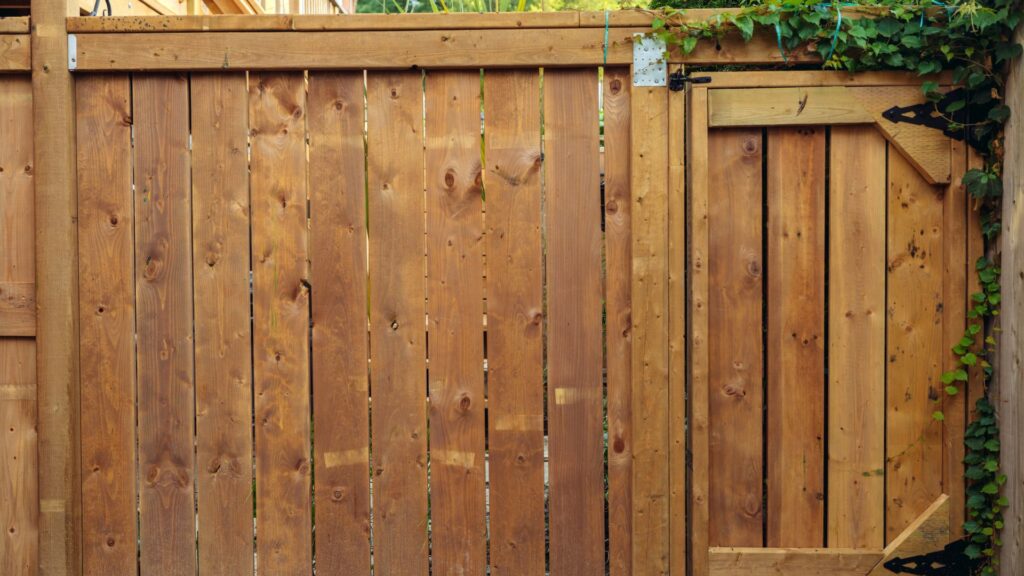
FAQs: About How Much Does It Cost To Install A Fence Gate
How much does it cost to install a basic fence gate?*
The cost of installing a basic fence gate can range from $350 to $700 for materials like wood or chain-link, and around $100 to $400 for labor, depending on the complexity and region. Factors like gate size and hardware can influence the total cost.
What is the most affordable type of fence gate?
Chain-link gates are typically the most affordable option, with materials costing between $100 and $400, depending on the size and style. Installation costs are generally lower due to the straightforward installation process.
How much does it cost to install an automated fence gate?
Installing an automated fence gate can range from $1,000 to $3,000 or more, depending on the gate type, automation features (such as remote controls, sensors, and motors), and installation labor. The complexity of automation can significantly raise the total cost.
Do I need a permit to install a fence gate?
Permit requirements vary by location. Some areas may require a permit for installing a fence gate, especially if it exceeds a certain height or is part of a larger fence. It’s always a good idea to check with your local government or homeowner’s association to confirm any permit requirements.
Can I install a fence gate myself?
Yes, it is possible to install a fence gate as a DIY project, especially if it’s a simple design. However, it requires some basic carpentry or metalworking skills, tools, and time. DIY installation can save you on labor costs, but you should be confident in your abilities, especially for larger or more complex gates.
How long does it take to install a fence gate?
The time required to install a fence gate can vary based on the complexity of the gate and whether it’s a DIY project or professional installation. A simple gate may take 2-4 hours for a professional, while more complex or automated gates could take a full day or longer.
What materials are best for a low-maintenance fence gate?
Vinyl and aluminum gates are popular low-maintenance options. Vinyl doesn’t require painting or staining and is resistant to weathering. Aluminum is rust-resistant and lightweight, making it durable and easy to maintain.
How often should I maintain my fence gate?
The maintenance schedule depends on the material of your gate. Wood gates should be stained or sealed every 1-2 years to protect against weather damage. Metal gates may need rust protection and repainting every few years. Vinyl and aluminum gates require minimal maintenance, usually just a periodic cleaning.
Can I customize my fence gate?
Yes, many fence gates can be customized in terms of size, design, material, and color. Customized gates may cost more due to specialized materials or labor, but they offer the opportunity to match your home’s aesthetic or add extra features like decorative elements or automation.
What are some common additional costs for installing a fence gate?
Common additional costs include gate hardware (such as hinges, latches, and locks), automation systems, decorative elements, and any necessary permits. You may also need to budget for painting, staining, or sealing if your gate is made of wood, as well as ongoing maintenance for different materials.
Conclusion
In conclusion, installing a fence gate involves several key factors that influence the overall cost, including the choice of materials, gate design, and labor. It’s crucial to carefully select the right options that fit both your budget and your needs. Taking the time to research and compare these elements can make a significant difference in the outcome. If you’re ready to move forward, consider reaching out to local contractors for quotes or dive deeper into exploring various gate styles to find the perfect fit. Ultimately, investing in a well-designed fence gate not only boosts the security of your property but also enhances its curb appeal, making it a valuable long-term investment.
About the Author:
Mike Veail is a recognized digital marketing expert with over 6 years of experience in helping tradespeople and small businesses thrive online. A former quantity surveyor, Mike combines deep industry knowledge with hands-on expertise in SEO and Google Ads. His marketing strategies are tailored to the specific needs of the trades sector, helping businesses increase visibility and generate more leads through proven, ethical methods.
Mike has successfully partnered with numerous companies, establishing a track record of delivering measurable results. His work has been featured across various platforms that showcase his expertise in lead generation and online marketing for the trades sector.
Learn more about Mike's experience and services at https://theleadguy.online or follow him on social media:

